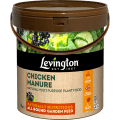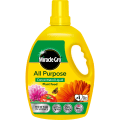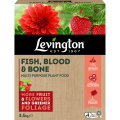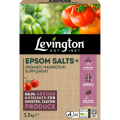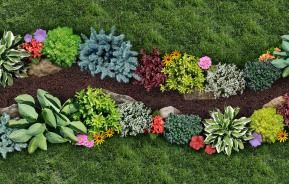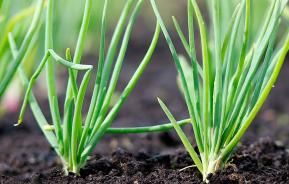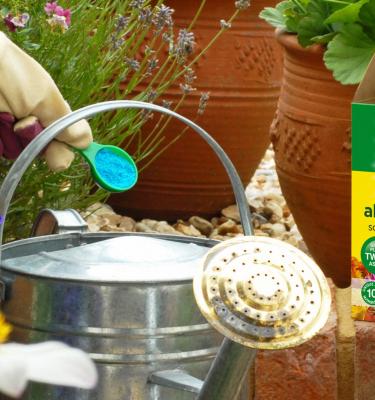
How does fertiliser work?

Just like us, plants need food in order to grow healthy and strong. Most of the nutrients that plants need are already available in the soil, but fertilisers, also known as plant food, provide additional nutrients that allow plants to grow larger, producing more flowers and fruit. Fertilisers for plants can also add nutrients that may be missing in the soil. Combined with good soil management techniques, such as regular mulching and addition of compost and soil improvers, fertilisers can have a dramatic effect on plant growth.
What’s in a fertiliser?
The three most important elements that plants need for growth are:
- Nitrogen (chemical symbol N) for green leafy growth.
- Phosphorus (chemical symbol P) helps plants produce strong, healthy roots and shoots.
- Potassium (chemical symbol K) to boost the production of flowers and fruit.
What fertiliser does is add these elements to soil or compost so that they are available for plants to use. The proportion of these elements in fertilisers for plants is known as the NPK ratio and is listed on the label of every fertiliser box or bottle. For example, Tomorite, a tomato feed high in potassium, has an NPK ratio of 4-3-8, which means that it contains 4% nitrogen, 3% phosphorus and 8% potassium compounds. Fertilisers also contain a range of other elements such as magnesium, boron and manganese, which are called trace elements. Plants only need a small amount of each of these trace elements, but they are instrumental in maintaining plant health.
Inorganic and organic fertilisers
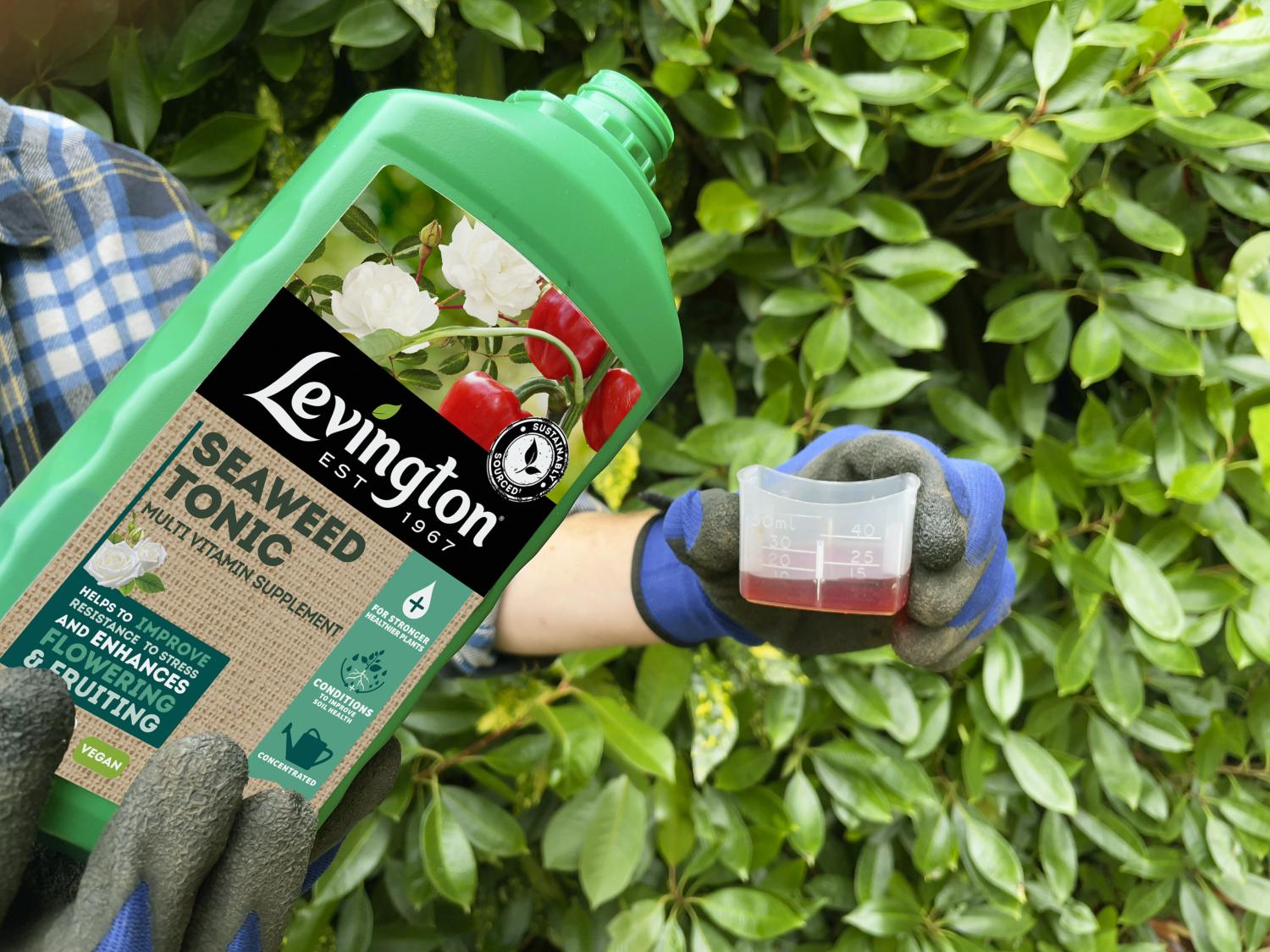
Fertilisers can be either organic or inorganic. Organic fertilisers are made directly from plant or animal sources, such as seaweed, bone meal, blood fish and bone, and chicken manure pellets. These fertilisers take time to break down in the soil, releasing their nutrients slowly over several months.
Inorganic fertilisers are man-made using chemical processes. They are usually more concentrated and faster- acting than organic fertilisers, so are good for giving plants a quick boost. Tomorite and Miracle-Gro All Purpose Concentrated Liquid Plant Food are examples of quick-acting inorganic fertilisers, in the sense that they are man-made, however they do have an organic formulations, meaning they are perfect for discerning organic gardeners too!
Types of fertiliser
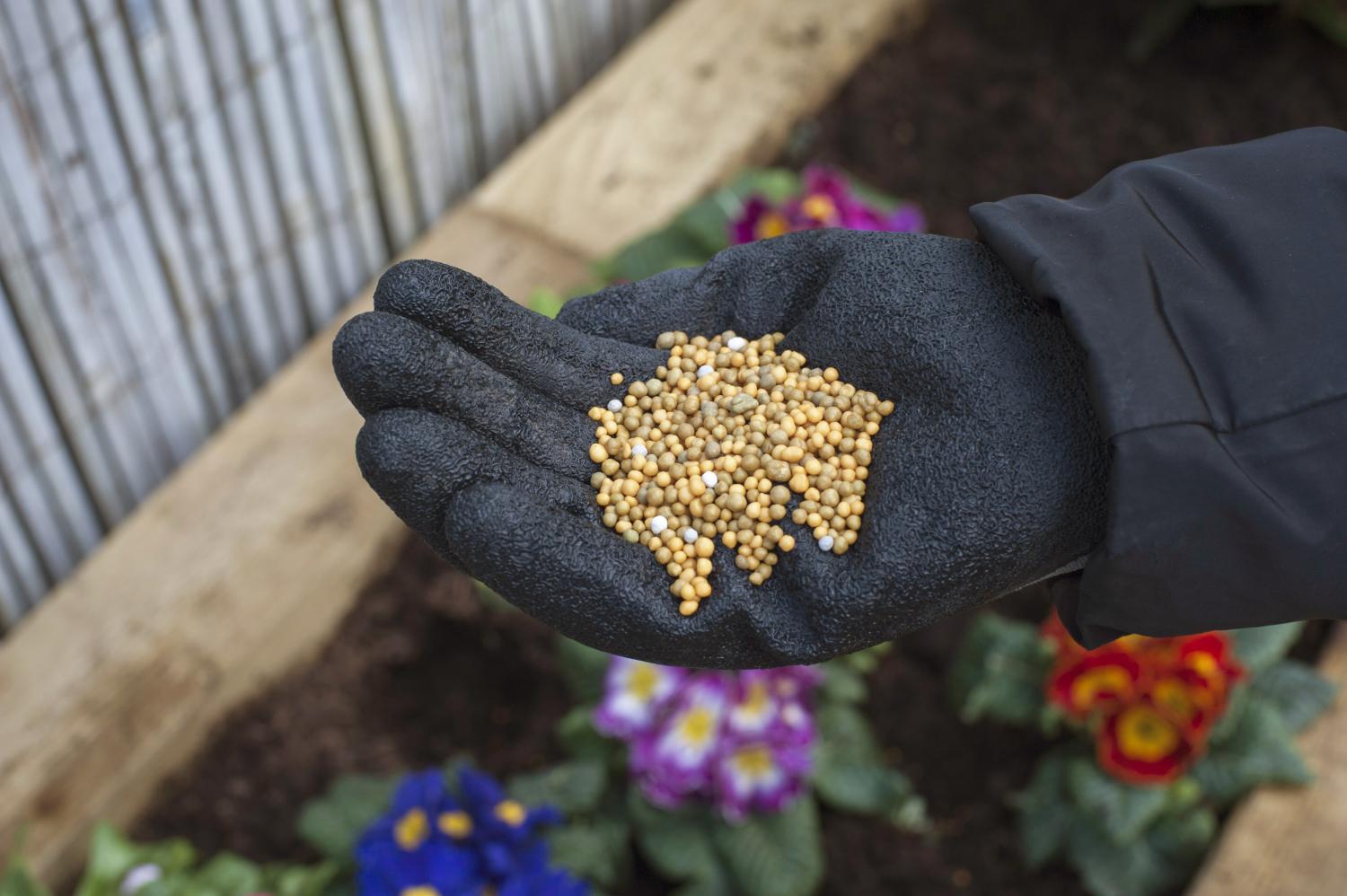
With so many different fertilisers for plants available on garden centre and supermarket shelves, it’s helpful to know what the various types of fertiliser are and what they do, so that you can choose the right fertiliser for your plants.
Compound fertilisers
These contain a mixture of the important nutrients that plants need for healthy growth. They’re ideal for general feeding, especially for container plants, and are usually applied several times during the growing season. Most lawn fertilisers are compound fertilisers, containing a range of nutrients to keep grass green and healthy throughout the year. Examples of compound fertilisers would be Miracle-Gro All Purpose Concentrated Liquid Plant Food and Miracle-Gro Organic Pump & Feed All Purpose.
Straight fertilisers
Straight fertilisers contain one main nutrient. They may also include small amounts of other nutrients that help the plant to absorb and make use of the main nutrient. Straight fertilisers are usually used to correct specific nutrient deficiencies in plants, or to give plants an extra dose of a nutrient that they need at a specific time of year, for example, potatoes often need nitrogen and potassium during early growth. Examples of straight fertilisers are Sulphate of Ammonia, used to correct nitrogen deficiency, and Sulphate of Potash, which gives tomatoes and other flowering plants the extra potassium they need in summer to produce abundant flowers and fruit.
Slow-release fertilisers
These are so named because they break down slowly in the soil, releasing nutrients over several months. These are usually organic fertilisers, for example Miracle-Gro Performance Organics All Purpose Granular Plant Food, which releases its nutrients into soil or compost over a period of 3 months.
Controlled release fertilisers
Controlled release fertilisers are inorganic, usually granules with a specially formulated coating which allows their nutrients to be released slowly into the soil in response to moisture levels and soil temperature. As the soil warms, more nutrients are released, making them available just when the plants are growing at their fastest. Miracle-Gro Premium All Purpose Continuous Release Plant Food is an example of a controlled release fertiliser which can be applied once in spring and will release its nutrients as needed through the growing season.
Lawn fertilisers
The best times to feed lawns are in spring and autumn, and specially formulated spring and autumn lawn fertilisers are available for this. In spring, lawns need an extra boost of nitrogen to promote lush green growth for summer, and in autumn they benefit from fertilisers high in potassium and phosphorus to harden the grass and help it develop strong root systems which will get it through the winter. High-nitrogen lawn feeds such as Evergreen Fast Green Lawn Food can be used throughout summer to give tired lawns a boost, though they’re not used after early autumn as the lush growth they produce could be damaged by winter frosts.
Specialised fertilisers
Many plants need a bit of extra help at certain times of year. Specialised fertilisers have been developed to ensure plants have all the nutrients they need to grow strong, healthy and produce abundant flowers and fruit.
- Ericaceous plants (i.e. plants that grow best in acidic soils) such a hydrangeas, rhododendrons, camellias and azaleas all benefit from extra feeding in spring and summer, when they are producing their spectacular flowers. A specialist ericaceous fertiliser provides all the nutrients they need to grow strong and healthy. This is especially important for plants grown in pots, where the nutrients in the compost need to be regularly replenished.
- Roses should be given a spring feed to give them a boost before they start to flower.
- Plants that flower and then fruit, like tomatoes, strawberries, courgettes, cucumbers and chilli peppers will all appreciate regular feeding with a high potash feed once the fruit starts to develop.
How to apply fertiliser

There are several different ways to apply fertiliser, depending on the time of year and the type of plant food you’re using. Here are the most common ways to apply fertiliser:
- Top dressing: Adding a controlled-release granular fertiliser such as Miracle-Gro Rose and Shrub Fast Acting Granules Plant Food to the surface of the soil in spring. This gives plants an extra boost of nutrients just as they are starting to put on new growth.
- Base dressing: Adding fertiliser to the soil or compost before planting. The fertiliser can be raked in or mixed with existing soil when planting in a hole in the ground or in a container.
- Liquid plant food: This is available both in concentrated and ready-to-use pre-diluted form and is ideal for feeding container plants. Concentrated liquid feeds should be diluted in water and applied with a watering can. Pre-diluted liquid feeds like Miracle-Gro Pour and Feed Ready to Use Plant Food can be poured directly onto moist soil, in line with the manufacturer’s dosage guidelines.
Potassium deficiency in plants
Yellow or purple-tinged leaves turning brown at the edges and poor flowering or fruiting could indicate a lack of potassium. This is most common on sandy or chalky soils, or in plants grown in containers. Apply a high potash feed like Tomorite or Sulphate of Potash.
Magnesium deficiency in plants
Leaves yellowing between the veins can mean lack of magnesium. It’s more common on sandy and chalky soils and can also be caused by over-feeding with high potash fertiliser, so make sure you always read the back of your pack for detailed instructions. If this occurs, an application of Epsom salts will raise the magnesium levels in the soil.
Iron deficiency in plants
Iron deficiency is one of the most common problems for ericaceous plants like camellias, azaleas etc, especially when grown in pots. If the soil or compost is not acidic enough, ericaceous plants can’t absorb iron from the soil, and this causes their leaves to turn yellow. If the plants are in containers, replanting them in ericaceous compost should solve the problem. Give plants in the ground an extra feed with Sulphate of Iron.
How to feed fruit and vegetable plants
The best fertiliser for vegetables and fruit depends on the type of plant that you are growing. Leafy vegetables like kale and spinach need a general fertiliser high in nitrogen like Miracle-Gro Performance Organics Fruit and Veg Granular Plant Food added to the soil when planting or sowing seeds. Plants that flower and then fruit, like tomatoes, strawberries, courgettes and squash need plenty of potassium once the fruits start to develop, so apply a high-potash fertiliser like Tomorite every fortnight for impressive harvests!
How to feed plants in containers
.jpg)
Plants in containers need regular feeding during the growing season as the nutrients in the compost get used up after about six weeks. Nutrients are also washed out of the compost every time the plant is watered and need to be regularly replaced.
Liquid feeds are ideal for plants in containers, as you can easily dilute them to the right strength and be sure you’re not overdosing your plants. Feed regularly from spring to autumn, and always follow the instructions on dilution rates and how often to feed. If you’re in doubt, feed less rather than more, to avoid damaging the plants.
Don’t apply liquid plant food to dry compost as this can damage plants’ roots. If your plants are wilting or showing signs of stress, water them and wait until they have recovered before feeding. You can also check how dry your soil is by pushing your finger into the soil. The tip of your finger should be able to tell you how dry or wet your soil is. This is especially important if you use peat free compost, as peat free compost can often look dry, but good quality peat free composts actually retain moisture really well and will still be wet underneath.
FAQs
What is fertiliser made of?
Plant fertilisers contain the nutrients that plants need to grow strong and healthy. They can be made from a wide range of substances. Organic fertilisers are made from plant or animal sources, such as seaweed, bone meal or chicken manure pellets. Inorganic fertilisers are manufactured and contain plant nutrients in synthesised chemical forms, which means they are perfect for providing specific nutrients that are in short supply for the plant.
How does fertiliser work?
Fertilisers add elements such as nitrogen, potassium, iron and phosphorus to soil or compost in the form of organic or inorganic chemical compounds. Plants absorb these through their roots and use them to grow and produce leaves, stems, flowers and fruit. Applying fertiliser helps replace nutrients that have been used up by plants or are missing from the soil.
How long does fertiliser take to work?
Fast-acting inorganic plant fertilisers like Miracle-Gro Evergreen Fast Green Liquid Concentrate can start to show results between 1-5 days after application. Organic slow-release fertilisers like bone meal can take 3-4 months to gradually break down in the soil and release their nutrients. Controlled release inorganic fertilisers are designed to release nutrients into the soil over several months as plants need them.
What happens if you use too much fertiliser?
Using too much fertiliser can harm your plants. If the fertiliser is too concentrated, it can draw water out of plant roots in a process called reverse osmosis, damaging the roots and harming or even killing the plant. Too much fertiliser can also result in over-lush growth which is more at risk from pests and diseases. To avoid damaging your plants, always follow the manufacturer’s instructions when applying fertiliser.
